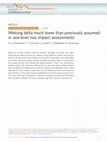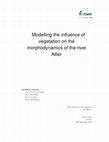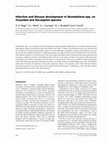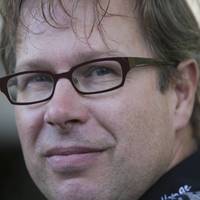Papers by Hans Middelkoop

Geomorphic Approaches to Integrated Floodplain Management of Lowland Fluvial Systems in North America and Europe, 2015
The Volga River in the Russian Federation has been regulated by a cascade of reservoir dams since... more The Volga River in the Russian Federation has been regulated by a cascade of reservoir dams since the 1950-1960s. This chapter presents an overview of the main hydrological and morphological responses of the Volga River downstream of the Volgograd reservoir dam. Regulation caused a decrease in magnitude of the spring peak flow, an earlier start and peak of the flood and a considerably steeper rise and fall of the flood. Morphological responses include a considerable channel incision in the river stretch downstream of the Volgograd dam. Furthermore, the reduction in peak flow magnitude results in a general tendency of silting up of secondary channels, and promotes vegetation colonisation along the active parts of the floodplain. Restoring the natural flow regime and morphodynamics will be problematic, particularly in view of the potential hydrological impacts of climate change.

Nature Communications, 2019
Deltas are low-relief landforms that are extremely vulnerable to sea-level rise. Impact assessmen... more Deltas are low-relief landforms that are extremely vulnerable to sea-level rise. Impact assessments of relative sea-level rise in deltas primarily depend on elevation data accuracy and how well the vertical datum matches local sea level. Unfortunately, many major deltas are located in data-sparse regions, forcing researchers and policy makers to use low-resolution, global elevation data obtained from satellite platforms. Using a new, high-accuracy elevation model of the Vietnamese Mekong delta, we show that quality of global elevation data is insufficient and underscore the cruciality to convert to local tidal datum, which is often neglected. The novel elevation model shows that the Mekong delta has an extremely low mean elevation of ~0.8 m above sea level, dramatically lower than the earlier assumed ~2.6 m. Our results imply major uncertainties in sea-level rise impact assessments for the Mekong delta and deltas worldwide, with errors potentially larger than a century of sea-level ...
Global and Planetary Change

To support strategic water management, a new scenario method is being developed to explore possib... more To support strategic water management, a new scenario method is being developed to explore possible non-linear long-term developments of the coupled water-society system. This method entails a policy-game in which players compete over future water management policy. The game involves the formation and dynamical change of advocacy coalitions in which players holding similar perspectives on water management cooperate. Shifts in the positions and / or relative power of the various coalition perspectives - under various scenario drivers and shock events - are assumed representative for possible real-life future shifts of world view and management style at the societal level. The game involves various modelling tools. Players interact with an integrated computer model of the water system, to explore the long-tem impacts of various drivers, and the consequences of adopted management strategies. Furthermore, an analytical perspective mapping tool is used to visualise and quantify the devel...
Netherlands Journal of Geosciences, 2007
Earth Surface Dynamics, 2017
The beach-ridge sequence of the Usumacinta–Grijalva delta borders a 300 km long section of ... more The beach-ridge sequence of the Usumacinta–Grijalva delta borders a 300 km long section of the southern Gulf of Mexico coast. With around 500 beach ridges formed in the last 6500 years, the sequence is unsurpassed in the world in terms of numbers of individual ridges preserved, continuity of the record, and temporal resolution. We mapped and dated the most extensively accreted part of the sequence, linking six phases of accretion to river mouth reconfigurations and constraining their ages with…

Quaternary Science Reviews, 2016
This paper describes the sedimentary architecture, chronostratigraphy and palaeogeography of the ... more This paper describes the sedimentary architecture, chronostratigraphy and palaeogeography of the late Middle and Late Pleistocene (Marine Isotope Stage/MIS 6-2) incised Rhine-valley fill in the central Netherlands based on six geological transects, luminescence dating, biostratigraphical data and a 3D geological model. The incised-valley fill consists of a ca. 50 m thick and 10-20 km wide sand-dominated succession and includes a well-developed sequence dating from the Last Interglacial: known as the Eemian in northwest Europe. The lower part of the valley fill contains coarse-grained fluvio-glacial and fluvial Rhine sediments that were deposited under Late Saalian (MIS 6) cold-climatic periglacial conditions and during the transition into the warm Eemian interglacial (MIS 5e-d). This unit is overlain by fine-grained fresh-water flood-basin deposits, which are transgressed by a fine-grained estuarine unit that formed during marine high-stand. This ca. 10 m thick sequence reflects gradual drowning of the Eemian interglacial fluvial Rhine system and transformation into an estuary due to relative sea-level rise. The chronological data suggests a delay in timing of regional Eemian interglacial transgression and sea-level high-stand of several thousand years, when compared to eustatic sea-level. As a result of this glacio-isostatic controlled delay, formation of the interglacial lower deltaic system took only place for a relative short period of time: progradation was therefore limited. During the cooler Weichselian Early Glacial period (MIS 5d-a) deposition of deltaic sediments continued and extensive westward progradation of the Rhine system occurred. Major parts of the Eemian and Weichselian Early Glacial deposits were eroded and buried as a result of sea-level lowering and climate cooling during the early Middle Weichselian (MIS 4-3). Near complete sedimentary preservation occurred along the margins of the incised valley allowing the detailed reconstruction presented here. © 2015 Elsevier Ltd.

Natural Hazards, 2015
Common flood risk analyses often focus on direct impacts corresponding to the maximum depths of f... more Common flood risk analyses often focus on direct impacts corresponding to the maximum depths of flood events. However, this information is not sufficient for risk communication, for the design of flood emergency plans and for the selection of risk management measures. For those issues, not only a static view of the maximum flood intensity is required, but also an understanding of the sequence of events from the rise of the threat to its recovery (including the action and reaction of actors). This paper discusses a new, additional approach to support flood risk management: the storyline approach, which serves to analyse the whole sequence of events during a flood. It starts from the initial rise of the flood threat, then describes the actual flooding and ends with the recovery from the flood impacts. It shows in a structured way the most important subsystems (water system, critical infrastructure system) and actors (water managers, local authorities, critical infrastructure operators, inhabitants) and their interactions. The application of the storyline approach to Dordrecht, the Netherlands, illustrates its use not only for flood event management, but also for the analysis of critical infrastructure vulnerability. The approach is designed to be applied in workshops with all relevant actors. The storylines support the communication of what might happen and help to develop consistent flood risk management strategies and emergency plans.
Many abandoned channels and dike-breach scour holes characterize the floodplains at the apex of t... more Many abandoned channels and dike-breach scour holes characterize the floodplains at the apex of the Rhine Delta (Germany and the Netherlands). This study demonstrates the suitability of sedimentary records for (palaeo)flood characterization. Based on a network of sites, it is possible to provide an accurate (internally cross-validated) flood chronology for the Lower Rhine and delta, and to reconstruct regional differences in the impact of floods (e.g., by ice jams or local dike breaches). Moreover, given the preservation of filled oxbows from all periods along the Lower Rhine, it is possible to extend flood chronologies and magnitude estimations back to the Early Holocene using sedimentary data.

INTRODUCTION 1.1 PROBLEM DEFINITION 1.2 OBJECTIVES 1.3 RESEARCH APPROACH 1.4 OUTLINE OF THE REPOR... more INTRODUCTION 1.1 PROBLEM DEFINITION 1.2 OBJECTIVES 1.3 RESEARCH APPROACH 1.4 OUTLINE OF THE REPORT 2 BIOGEOMORPHOLOGY OF MEANDERING RIVERS-A REVIEW 2.1 INTRODUCTION 2.2 FLOW 2.3 RIVER MORPHOLOGY 2.4 VEGETATION 3 DESCRIPTION OF THE STUDY AREA: THE RIVER ALLIER 3.1 INTRODUCTION 3.2 DISCHARGE REGIME 3.3 SEDIMENT CHARACTERISTICS 3.4 MORPHOLOGY 3.5 VEGETATION 4 FIELD SURVEY 4.1 INTRODUCTION 4.2 DISCHARGE REGIME 4.3 WATER LEVEL 4.4 FLOW DIRECTIONS ON POINT-BARS 4.5 TERRAIN ELEVATION AND CHANNEL DEPTH 4.6 VEGETATION DISTRIBUTION AND VEGETATION CHARACTERISTICS 5 DISCUSSION OF THE FIELD SURVEY RESULTS 5.1 CLIFF EROSION CELERITY 5.2 SEDIMENT VOLUME 6 MODELLING THE RIVER ALLIER 6.1 INTRODUCTION 6.2 DELFT3D MODEL DESCRIPTION 6.3 COMPUTATIONAL GRID AND TIME FRAME 6.4 BOUNDARIES 6.5 BED ROUGHNESS 6.6 TOPOGRAPHY 6.7 SEDIMENT TRANSPORT 6.8 VEGETATION 6.9 REMAINING PARAMETERS Table of contents v 7 SENSITIVITY ANALYSIS 7.1 INTRODUCTION 7.2 INVESTIGATED DEPENDENT VARIABLES 7.3 FLOW 7.4 SEDIMENT TRANSPORT 7.5 RIVER MORPHOLOGY 7.6 VEGETATION 7.7 SUMMARY OF THE SENSITIVITY ANALYSIS 8 DISCUSSION ON THE BEHAVIOUR OF THE MODEL 8.1 FLOW VELOCITY 8.2 FLOW DIRECTION 8.3 WATER DEPTH 8.4 BED SHEAR STRESS 8.5 RIVER MORPHOLOGY

Alterra is the main Dutch centre of expertise on rural areas and water management. It was founded... more Alterra is the main Dutch centre of expertise on rural areas and water management. It was founded 1 January 2000. Alterra combines a huge range of expertise on rural areas and their sustainable use, including aspects such as water, wildlife, forests, the environment, soils, landscape, climate and recreation, as well as various other aspects relevant to the development and management of the environment we live in. Alterra engages in strategic and applied research to support design processes, policymaking and management at the local, national and international level. This includes not only innovative, interdisciplinary research on complex problems relating to rural areas, but also the production of readily applicable knowledge and expertise enabling rapid and adequate solutions to practical problems. The many themes of Alterra's research effort include relations between cities and their surrounding countryside, multiple use of rural areas, economy and ecology, integrated water management, sustainable agricultural systems, planning for the future, expert systems and modelling, biodiversity, landscape planning and landscape perception, integrated forest management, geoinformation and remote sensing, spatial planning of leisure activities, habitat creation in marine and estuarine waters, green belt development and ecological webs, and pollution risk assessment. Alterra is part of Wageningen University and Research centre (Wageningen UR) and includes two research sites, one in Wageningen and one on the island of Texel. Preface 11 1 General introduction 13 The context: river rehabilitation Scope of the study: the functional-geographical approach Study area: lowland river systems in the Netherlands Aim, objectives and structure of the thesis References 2 Functional-geographical approach 23 User requirements Land resource inventory Landforms and geomorphological processes Functional hierarchies Conclusions References 3 Aquatic macrophyte growth and seasonal bedform pattern changes in a lowland sand-bed meandering stream 33

Quambalaria spp. are eucalypt leaf and shoot pathogens of growing global importance, yet virtuall... more Quambalaria spp. are eucalypt leaf and shoot pathogens of growing global importance, yet virtually nothing is known regarding the manner in which they infect and colonize their hosts. A study of the infection process of Q. pitereka and Q. eucalypti on Corymbia and Eucalyptus species was thus undertaken using light, scanning and transmission electron microscopy after artificial inoculation. Conidial germination was triggered when relative humidity levels exceeded 90% and commenced within 2 h in the presence of free water. Light reduced germination but did not prevent germination from occurring. Conidial germination and hyphal growth occurred on the upper and lower leaf surfaces with penetration occurring via the stomata or wounds on the leaf surface or juvenile stems. There was no evidence of direct penetration of the host. Following penetration through the stomata, Q. pitereka and Q. eucalypti hyphae grew only intercellularly without the formation of haustoria or interaction apparatus, which is characteristic of the order Microstromatales. Instead, the presence of an interaction zone is demonstrated in this paper. Conidiophores arose through stomatal openings producing conidia 7 days after infection.
4th International Geologica Belgica Meeting 2012. Moving Plates and Melting Icecaps – Processes a... more 4th International Geologica Belgica Meeting 2012. Moving Plates and Melting Icecaps – Processes and Forcing Factors in Geology. Brussels 11-14/09/12

Uploads
Papers by Hans Middelkoop
In this context, scenarios are an appropriate tool to assist nutrient emissions modelling, and to assess impacts, possible
pathways for socio-economic development and associated uncertainties. Evaluated against the 1993–2003 baseline period, scenarios target the 2030 horizon, i.e. through the implementation process of the Water Framework Directive (Directive 2000/60/EC). After a critical examination of the methodology used in the participatory development of socio-economic scenarios, we present four possible futures (or perspectives) for the Catalan river catchment conceived by stakeholders invited to a workshop. Keys to the success of such a participatory process were trust, which enhanced openness, and disagreements, which fostered the group’s creativity for scenario development. The translation of narrative socio-economic scenarios into meaningful nutrient emission scenarios is also discussed. By integrating findings of natural sciences and socio-economic analysis, we aim to assist decision makers and stakeholders in evaluating optimal management strategies for the anthropogenic sources of nitrogen and phosphorus.
Response to points made in all letters, including ours (01-Aug-2012):
http://www.internetconsultatie.nl/basisregistratieondergrond
Original letter:
http://www.internetconsultatie.nl/basisregistratieondergrond/reacties